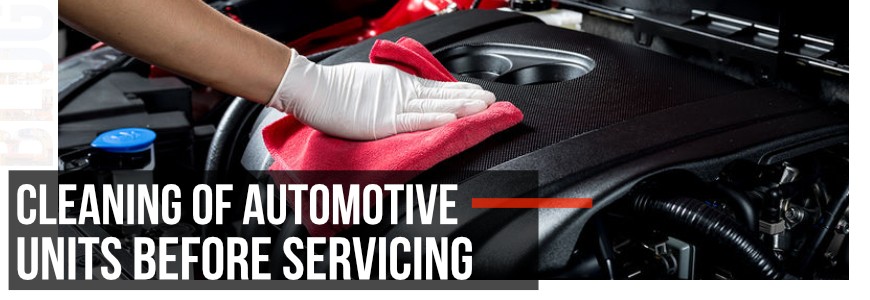
Repair and renovation of automotive unit assemblies often require the components to be cleaned from dirt and sludge to provide:
- high-quality repair;
- determination of the dimensions and physical-chemical properties of the materials;
- preparation of the components for protective coating;
- anticorrosive protection of the components during the time of repair;
- surface smoothness required for assembly operations
Procedures and techniques used to clean automotive units meet certain technical and economic requirements:
- availability of a specially equipped area;
- affordability;
- operating staff safety;
- environmental safety;
- use of professional detergents only.
Cleaning techniques
Let’s study the most common techniques of unit cleaning.
Physical and chemical methods (jet washing and special bath washing). Dirt and scale crust on the surfaces of the units and components are removed either with aqueous solutions of different agents or with a special cleaning solvent. High temperature (t = 75°С - 95°С) of chemical solutions for cleaning is the main condition. A jet of pressurized fluid and professional detergents will provide quality cleaning.
Electrochemical polishing with a conductive electrolyte. AC or DC is used. As the current density grows, the cleaning of the components becomes more efficient. Electrochemical polishing is an effective technique often applied as a pretreatment before galvanic, polymer, or color coating.
Ultrasonic cleaning is based on the transfer of energy from the ultrasonic transducer, through the liquid fluid, and to the surface to be cleaned. The accelerating effect produced by sound waves of 20 kHz-25 kHz moving through the water, creates bubbles. A hydraulic shock resulted from the bubble bursting fractures the sludge and affects the oil film.
Mechanical cleaning is used to clean the surfaces manually. Scrapers, brushes, and other accessory tools are used in the process. Abrasives used in combination with water or detergents provide a good cleaning effect.
Cleansing solutions and agents
- Water and caustic soda solution. Dirt, dust, plant residues, and any other non-oil impurities are removed with a jet of warm water of 70-80 °C. An aqueous solution of 2 % caustic soda is used to clean surfaces from fuel and lubricants.
- Hydrocarbons (gasoline, carbon oil) are organic solvents that belong to low-polarity organic compounds and can dissolve substances of their kind (oil and bitumen).
- Dissolving and emulsifying solutions, compositions of solvents, and emulsifiers with water (for example, SAS – surface-active substances). These substances can dissolve and emulsify impurities.
- An acid solution is an aqueous solution of mineral and organic acids used for rust and scale removal. Keep in mind that cleaning with an acid solution can lead to corrosive damage. To avoid this, the inhibitors protecting metal parts from corrosion failure should be added to the composition.
- Synthetic detergent, a mixture of alkaline salt and surfactants, is an excellent way to remove oil and carbon deposits.
The use of special equipment for cleaning of automotive units and their further repair is recommended. Safety regulations should be strictly observed.



COMMENTS